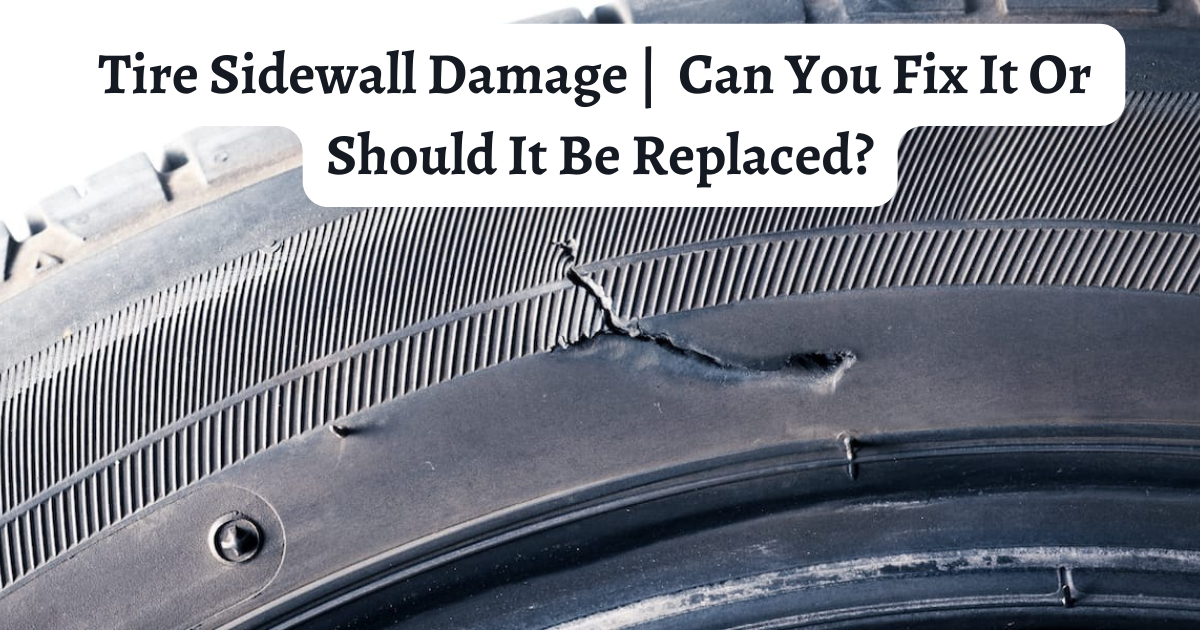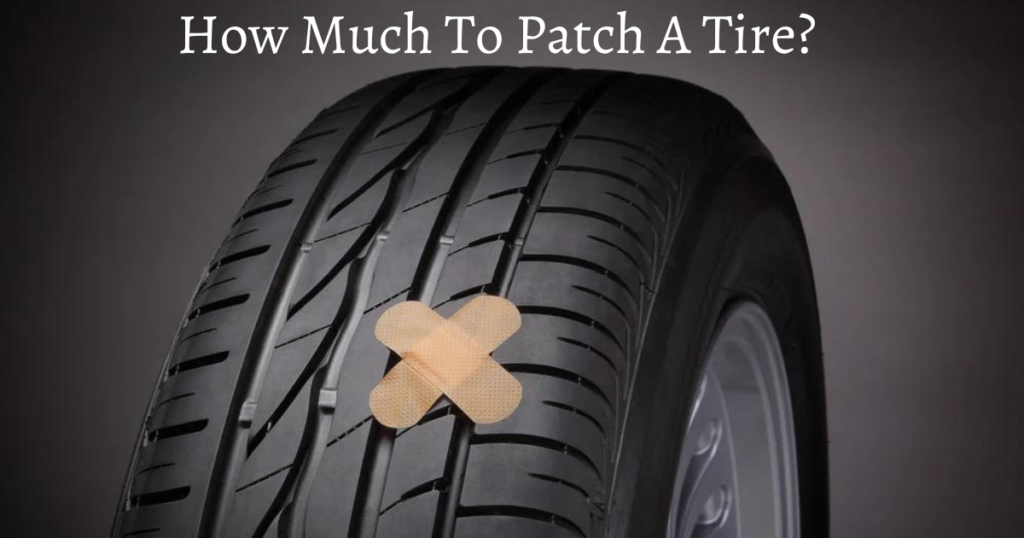
If you drive a car, it is certain that you will have to deal with a flat tire at some point, and no one enjoys the experience. It’s irritating, annoying, and a hassle. But relax; just because you have a flat tire doesn’t mean that it is permanently damaged. Patching it at a tire repair service shop can allow you to get more miles out of it.
Patching a punctured tire is the cheapest go-to solution. But the cost of a tire patch can vary depending on the materials used and who does the repair. You also have to decide if you can fix it yourself or need a professional mechanic. Here we will discuss all these factors so you can figure out the best possible solution for you.
What is Tire Patching?
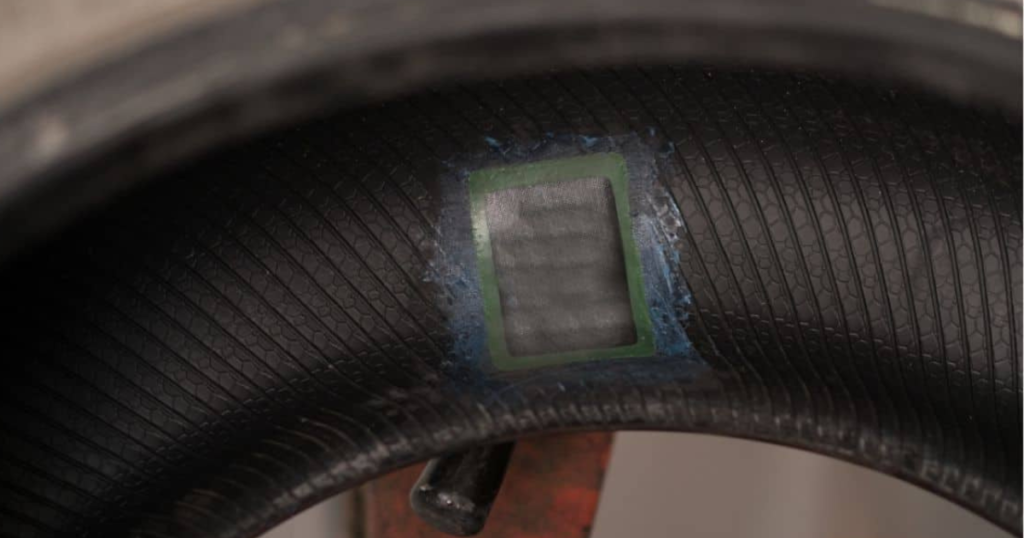
Patching a tire is a way to get the wheel part back to its original appearance. If your tire has just been punctured, this can be used as a quick fix instead of buying a new one. People use the patch method when their vehicle does not have a significant problem and they only need to conduct minor repairs to save money.
However, not everyone is good at it; therefore, the best option is to seek assistance from repair shops. Patching tires is a profitable business for auto shops. They don’t require a lot of labor, and the price of a patch is very low compared to most other auto parts.
How Much Does it Cost to Patch a Tire?
In order to get a tire puncture repaired, you could expect to pay between $10 and $20 on average. The size of the puncture is an important factor and will decide how much it will cost to fix your tire.
The cost depends on your chosen maintenance center and is not the same everywhere. While a tire repair won’t break the bank, it will take some of your time and effort. You can also purchase the tools and do the service yourself. But in all honesty, we don’t advise doing that.
Cost Breakdown for Tire Patching
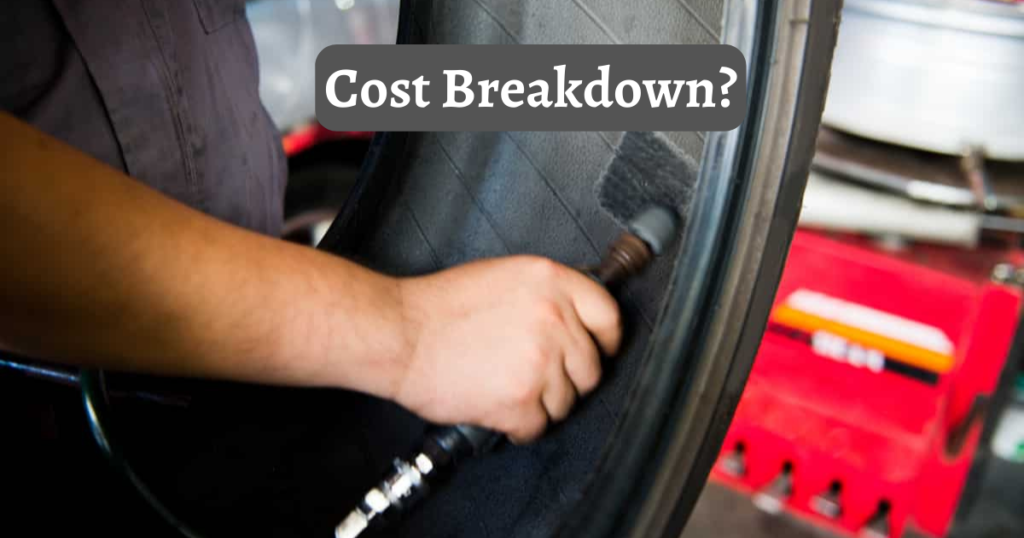
Every service center sets its own prices for tire patching. However, the composition of charges remains the same. These charges include the mechanic’s labor, the price of the patching material, and any additional work that may be needed before or after the tire patching.
Mechanic’s Labor Costs:
Most of the cost of a tire patch comes from the mechanic’s time and labor. A tire patch costs less than $2.00 at wholesale. It costs less than $0.10 to seal the patch with a glob of bead sealant. So far, the average mechanic takes about 15 minutes to patch a tire.
You should expect to pay $30 to $40 for both time and parts since most shops charge about $120 per hour for mechanics. Add $13.00 if you want the tire re-balanced, which is highly recommended. Remember, you are paying the mechanic for the time they dedicated to the repair based on their skill level.
Costs of Material:
The previously mentioned tire patch costs were based on a retail average. However, tire retailers buy their materials in large quantities to cut prices. What is different is their markup and other components like vulcanizing cement and/or sealer.
Potential Extra Costs:
While the cost of a
Tow Truck:
You’ll probably need to tow it if the tire has a large puncture and needs to go to a repair shop immediately. Tow trucks can cost up to $7 or even more per mile in addition to a minimum call fee. As a result, if a tow truck is required, expect to shell out at least $100.
Roadside Assistance:
It’s simple to get into trouble while attempting to repair a tire on your own, let alone just trying to put the spare on so you can get to a shop. You might need to call roadside assistance in that case. These services often cost $10 per month or less, though prices can vary depending on your area and other factors.
How to Check if Your Tire Can be Patched?
Not every tire can be patched. There are some tests that either a mechanic or you can perform. Doing these tests will help you figure out if your tire can be fixed or not.
Length Test:

The length of the puncture is the first thing to consider. The majority of nail punctures are the same in size as the nail. In this situation, since the puncture is so small, it is possible to patch the tire yourself. But you cannot patch a puncture that is 2 ½ inches or bigger.
Neither you nor a repair shop can patch it. Patches are not designed to cover such a large area of air loss. Even with the big patches, the inner tire liner does not seal completely. When the puncture looks more like a gash in the tread, it’s time to get a new tire.
Edge Test:

It is impossible to patch tire punctures less than two inches from the sidewall. This means that neither you nor the shop can fix it. In fact, it is illegal for auto repair shops to patch tires with sidewall punctures. The problem is that tire blowouts often arise from tire patches placed too close to the sidewall. It is related to the shifting nature of a tire’s sidewall-to-tread relationship.
Placing your thumb in that gap will allow you to measure the distance between the puncture and the sidewall. You’re safe if the puncture is at least a thumb’s width away from the side wall. If not, you’ll have to buy a new tire.
How to Patch a Tire?
When you have the right materials on hand, the tire patching procedure can be extremely simple to pull off. Yet, it can only be completed quickly with the proper and complete tools and equipment. Here is how you can do this:
Find the Leak:

Mechanics mostly use their senses to determine the origin of a leak. First, they pump up the tires’ air pressure significantly, making it simpler for them to find leaks because the air tends to escape from them.
They carefully inspect the tire, looking for any cuts, holes, or objects sticking out. After that, they check for hissing noises. It might be simple to locate the leak, particularly if a nail or screw is protruding through the tread.
But you need to carry out a soapy water test if you cannot locate the leak. Just combine water and dish soap in a spray bottle. Once the tire is inflated, start spraying the solution over it until bubbles start to form in one area. This shows where the leak is situated.
Dismount the Tire:

If you’re going to patch your tire, you need to remove it from the car and then take it off the rim. Using a specialized removal tool, carefully remove the valve stem core. There will be a complete release of tire pressure.
Break the bead between the tire and rim with a tire spoon and hammer. This must be done on both sides before the tire comes off the rim. If you use a tire plug, you won’t need to remove the tire; first, check the legal requirements in your state.
Apply the Patch:

Clean the hole from the inside with sandpaper or an air-die grinder. A strong bond requires that all surfaces be roughed up and cleaned. Use compressed air to spray the area to get rid of any leftover debris. The buffed inner tire surface needs to be coated with vulcanizing cement. This cement prevents water from penetrating the hole.
Wait until the cement becomes tacky before moving it. Remove the patch’s adhesive plastic covering. This is the side you should use to touch the inside of the tire. Cover the hole with the tire patch’s sticky part. This step makes sure that the sticky material adheres to the inner surface of the tire.
The patch can be made even more secure with a roller. The roller removes any air bubbles that could have gotten stuck. Wait until the patch is totally dry before moving on.
Reinstall the Tire:
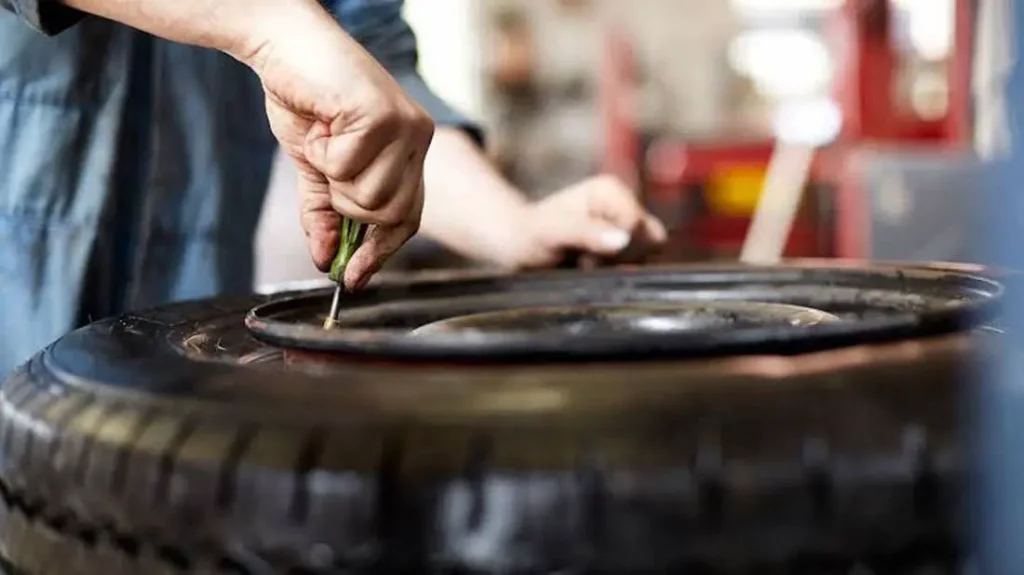
Lubricate the tire bead using dish soap. Use the tire spoons to slide the tire over the rim. Change the valve stem core with a new one. Inflate the tire to the pressure recommended on the driver’s side door jamb.
To double-check that the leak has been fixed, spray the area again with dish soap and water. Install the lug nuts before sliding the wheel back onto the vehicle. You’re all set to hit the road.
Is it Safe to Patch a Tire?

It is absolutely safe to drive on a patched tire under the right circumstances. In fact, it is the preferred method of repair in most cases. But, if you drive aggressively or often exceed the speed limit, you should choose to replace the tire instead. It may not be worth putting your safety at risk for the price.
How Long Does a Tire Patch Last?

The professional patch should keep the tire going for the rest of its life. If the tire still has many years left on it, you can expect it to last forever. But, if the tire is becoming worn and will soon need to be changed, replacing it now may be preferable to patching it. For example, investing in a patch won’t make financial sense if you plan to purchase new tires in a few months.
When To Avoid Patching:
Patching is not worth the money in the following situations:
- The hole is at an odd angle.
- Your sidewall is also severely damaged.
- You see bulges or bubbles in the rubber.
- Your tire has been patched near the current puncture.
- Your tire is experiencing a second issue.
Frequently Asked Questions:
Here are some frequently asked questions about patching tires:
Can you Patch a Tire on Your Qwn?
Sure, you can patch your flat tire. But you’ll need some tools and expertise to jack up the car, detach the tire, and grind the area around a hole. Or, you can use a cheap kit to plug it.
How Long Does it Take to Patch a Tire?
Professional flat tire service should never exceed 15 minutes unless major repairs are required. The process can take 30 minutes or more at home, depending on your expertise.
To Patch or to Plug, Which is Better?
Compared to the patch, the plug is quicker and doesn’t require removing the complete tire. But, after having a plug, a car owner is more likely to return in a few days for yet another repair.
On the other hand, patching can cover a large or uneven area. It costs the same as the tire plug, but it lasts longer. So, patching turns out to be more cost-effective in the long run instead of plugging.
Conclusion
Although dealing with a flat tire is never fun, fortunately, tire repairs are not expensive. Your tire patch shouldn’t cost more than $40, and in most repair shops, you’ll pay much less. If you don’t mind doing it yourself, you may also buy a tire patch kit; however, we don’t recommend it.
The price of a tire patch depends on how and where you get it done, but overall, it’s a simple and cheap repair. What matters most is whether it is worth your money or not. And it definitely does!



